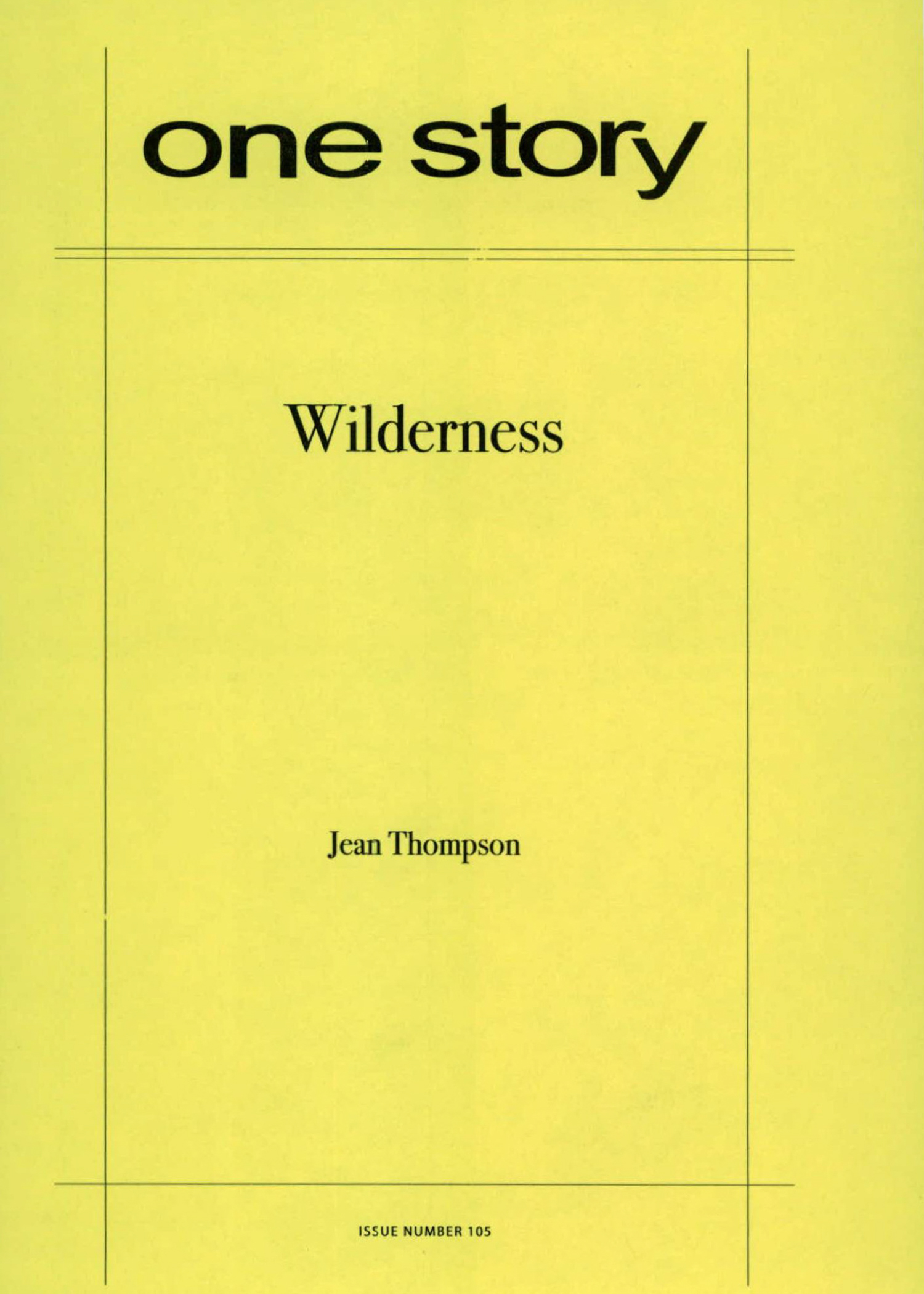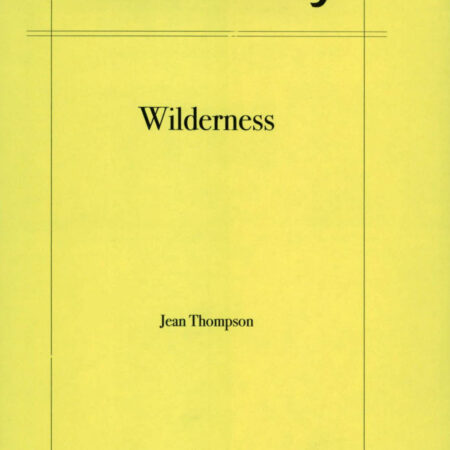
Wilderness
$2.50
68 in stock
Excerpt
The train was finally in motion, creeping through the underground tunnels of Union Station, bumping onto a different track in the train yard, then making its slow way through city intersections. In Chinatown it loitered on a siding, waiting for a freight to pass. After that, some haunted-looking old factory buildings. It picked up speed to travel the wonderland of industrial waste at the Indiana border. Here was a field of above-ground piping and submarine-shaped tanks—pressurized natural gas, Anna guessed—and a little farther along, the marching towers and glittering wires of an electrical plant, like a field of Christmas trees as imagined by aliens. Here the chimneys of a refinery, sending out stinking soot.
Anna turned away from the window. It felt like being confronted with her unmade bed when she was a child. Guilty consumer of electricity and gasoline, user of hair dryers, microwaves, watcher of television, buyer of bottled water. She figured she was in the proper state of self-chastisement to read Ted’s letter.
Jean Thompson
Jean Thompson is the author of Throw Like a Girl (Simon & Schuster, June 2007) as well as the novel City Boy; the short story collection Who Do You Love, a 1999 National Book Award finalist for fiction; and the novel Wide Blue Yonder, a New York Times Notable Book and Chicago Tribune Best Fiction selection for 2002. Her short fiction has been published in many magazines and journals, including The New Yorker, and been anthologized in The Best American Short Stories and the Pushcart Prize. Jean’s other books include the short story collections The Gasoline Wars and Little Face, and the novels My Wisdom and The Woman Driver. Jean has been the recipient of Guggenheim and National Endowment for the Arts fellowships, among other accolades, and taught creative writing at the University of Illinois-Champaign/Urbana, Reed College, Northwestern University, and many other colleges and universities.
Q&A by Hannah Tinti
- HT: Where did the idea for this story come from?
- JT: Like most story ideas, this one evolved rather than arriving fully formed. I began with wanting to place characters outside their comfort zones—Anna in her friend’s domestic suburban establishment, Ted out there in the woods (and largely offstage). Then characters announce themselves, and plot wheels begin to turn. I wanted Anna’s defense mechanisms (wilderness survival skills?) to be on display: her humor, her self-deprecation, her passive-aggressive conduct. It’s when we’re without the protection of the familiar that it’s possible to come to new realizations about one’s life, as Anna does. Ted is more of a choral element, or doubling, of that idea, since for all the verbiage of his letters, we don’t know what, if anything, his new experiences have brought him.
- HT: What was the most challenging aspect of writing this story?
- JT: Maintaining enough momentum in the story, investing a succession of small, ordinary incidents (meals eaten, trips to and from the train station) with enough psychological significance for Anna. Of course there is the heightened drama of Lynn heading out in her pajamas to confront her husband’s mistress, but the action ends in an anticlimax, and what’s really important is the rupture between Anna and Lynn.
- HT: During her train ride, Anna thinks, “There was a Disneyland quality to the trip, a visit to Normal Land.” How does Lynn’s family speak to the idea of normalcy in Middle America?
- JT: Fortunately for the writer, ‘normal’, in Middle America or anywhere else, seldom is what it seems. If you look at ‘normal’ lives long enough, it’s like examining a drop of pond water under a microscope, everything teeming and churning. John Cheever has a wonderful story, “The Wrysons,” about a seemingly ordinary suburban couple. Except the husband secretly bakes and consumes cakes in the middle of the night to assuage his melancholy, and the wife is obsessed with fears of nuclear holocaust. One night the husband falls asleep and his cake burns, causing the wife to wake up and think that nuclear war has begun. They confront each other in the kitchen, mumble a few words, and go right back to living their ‘normal’ lives. Marvelous.
- HT: Distance between characters, whether it was geographical distance, emotional distance, or a generational divide, seemed to be a huge factor in the story, particularly with the bookends of Anna taking the train. Can you talk a bit about how you approached this in “Wilderness,” and if it was intentional?
- JT: It was certainly intentional, even organic to the story. I wanted to portray characters who had ended up in different places in their lives, and the easiest way to do that was to put them at some literal distance from each other. Time is another gap between characters, since both of them have travelled far from their school days, when circumstances gave them a common experience. And the boys, Lynn’s sons, like all teenagers, cannot fathom the notion that their parents were once young.
- HT: Lynn and Anna’s friendship seems strained form the beginning, with comments like “Michigan Matron” cutting deep into their bond. How important is the divergence in these two women’s lifestyles to the story? On top of that, do you think they are equally unhappy with their different situations?
- JT: The friendship always had fault lines. The events of the story are the earthquake. Are they actively unhappy, or just doing the best they can in their separate circumstances? Maybe happiness is like normalcy, and doesn’t hold up to close scrutiny. I think that Lynn is resigned to the bargain she’s made with her marriage. Anna is always instructing herself to be happier and more optimistic. It doesn’t seem to come naturally to her. But she is the more dynamic character, and by the end she will attempt to change her attitude, even her nature, and to have “a kinder, braver heart.”
- HT: Can you tell us a little about the title?
- JT: I wanted to foreground Ted’s narrative as a kind of motif, the journey taken in hopes of self-exploration and self-improvement, which seems to me a very American notion. Anna is also in a kind of wilderness when she ventures into Lynn’s realm. There are no clearly marked paths that tell her how to behave or react. She’s always second-guessing herself.
- HT: How long did it take you to complete this story?
- JT: Most stories these days take me a month to six weeks to conceive and execute.
- HT: What is the best bit of advice about writing you have ever received?
- JT: After decades of teaching writing, and being taught, and examining the process from every possible and worrisome angle, I am happy to say that I’ve forgotten all the advice I was ever given, and no longer intend to dispense any.
- HT: What are you working on now?
- JT: “Wilderness” will be part of a new short story collection from Simon and Schuster. In terms of completion, I’m just about rounding the far turn.
